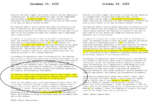| Modern families with two working adults are richer than those with a single breadwinner, and can afford to take a different approach to parenting. This is exacerbating inequality between rich and poor families.
Click here to subscribe to The Economist on YouTube: https://econ.st/2xvTKdy The family has always been a central building block of society. But families have changed dramatically in the rich world over the past 50 years. Changes to society mean that the old model of a breadwinning husband and a stay-at-home wife has all but collapsed. And the different ways rich and poor families raise their children are increasing social inequality. Today, gay families like Maggie and Joelle’s are widely accepted in the rich world. A generation ago, it was almost unthinkable that same-sex couples would get married.But now most people in rich countries think gay marriage is fine. Fears that gay marriages would undermine heterosexual ones have proven unfounded. And this is one reason why marriage equality has spread so extraordinarily fast. Before 2001 gay marriage was not legal anywhere in the world. Since then, it’s been legalised in nearly all rich countries and developing nations are starting to follow suit. It’s a far cry from the 1960s, when families typically consisted of a dad who went to work a stay-at-home mum and three or more kids. Better access for women to contraception education and jobs has changed this traditional family portrait. Across the globe, families are shrinking. Many expect their wives to do all the housework and childcare, even if they have a job. There is a huge mismatch of expectations around marriage in South Korea. Most men want a 1950s-style relationship whereas women want something more modern and equal. The result is they often end up not marrying or having kids at all and that’s left South Korea with a problem. Its population is in free fall. In 1960 the average South Korean woman had six children. In 2018 that figure shrank to less than one. A fertility rate of one means each generation is half as big as the previous one and in South Korea this means there are fewer workers to support the country’s ageing population. In rural areas, men are viewed as poor prospects by South Korean women. So the government is helping these men to find brides from poorer countries. State-funded assimilation centres like this, teach immigrant brides how to cook Korean food how to speak Korean and even how to deal with Korean mothers-in-law. Like most of her classmates studying here today 19-year-old Nguyen Thi Cam Thuy is from Vietnam. She recently married a South Korean man 40-year-old Kim Dae Hyun who found her through a matchmaking website. Over a fifth of married South Korean farmers and fishermen have tied the knot with a foreigner. But cross-cultural unions can be difficult and around a fifth of marriages between South Korean men and foreign women end in divorce within four years. This video of a man beating his foreign wife caused widespread outrage. 50 years ago in most rich countries domestic violence was considered normal. Now, it is universally condemned and rates have fallen sharply by three-quarters in America alone, since the mid-1990s. Today, other factors are more likely to affect the stability of families and these are contributing to a growing gulf between middle-class and working-class families. In most rich countries, if you don’t go to university you are more likely to have kids outside of marriage. And women who don’t finish high school are more likely to end up as single mothers than women who have a degree. In Jamie’s hometown of Hartlepool in north-east England, 70% of babies are born outside marriage like her twins, Sean and Liam. In Hartlepool in the 1960s men did heavy work in shipyards and factories which was much better paid than any job their wives could find. So the women stayed at home with the kids. But as technology advances manual work has dried up and uneducated men have struggled to find good jobs. If the only men available lack steady jobs and don’t help around the home some women feel they are better off alone. Middle-class families have remained solid in rich countries over the past 50 years while working-class families have grown much less stable. Women with a university degree are more likely than women who do not finish high school to be married and raise children with their husband as a team. |
Tags:



































